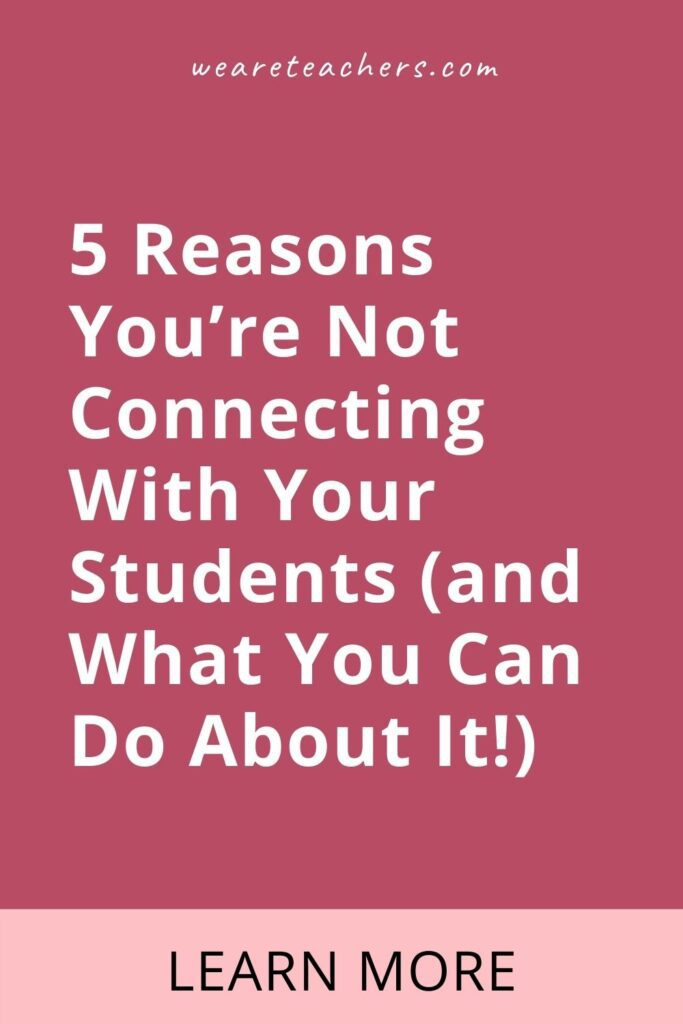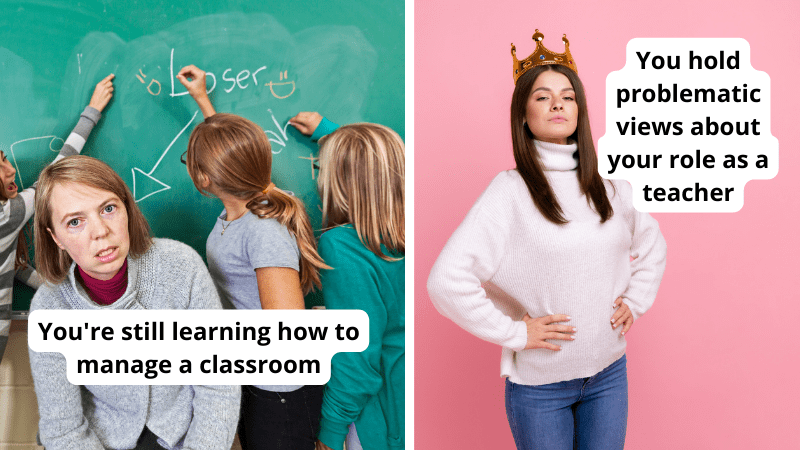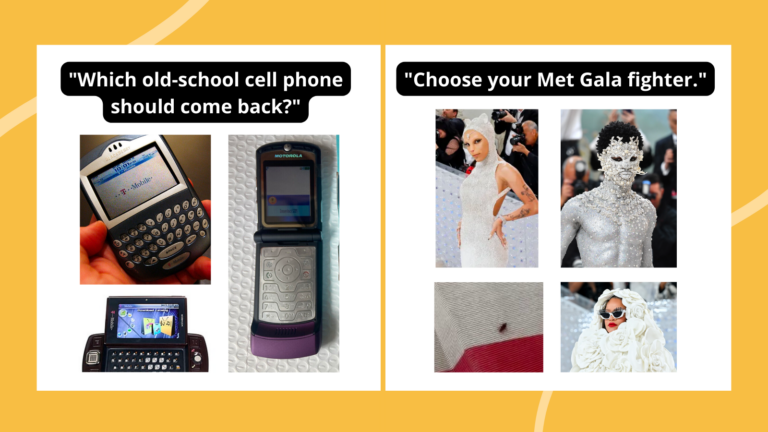Sometimes when I think about my first year of teaching, I cringe so hard I think my vertebrae are going to crack. I wish I had the addresses of where those students are now. I want to send them apology letters and baskets of crackers and fine cheeses.
I totally understand your frustrations with me, the letters will say. I get it now. I’m sorry I wasn’t a better teacher for you. Please accept these snacks and my sincere wishes that you’re happy and thriving. Love, Ms. Treleaven
During that first year, I couldn’t see that I was doing anything wrong. I was nice to my students, I respected them—why wasn’t that returned to me? It never occurred to me that—just like with peers my own age—relationships with students aren’t transactional. (Note: Even if relationships were transactional, my smiling and greeting them at the door is not an equal exchange for having to sit through 60 minutes of my poorly planned lessons in which I had very weak classroom management.)
Before I get into the list, please understand that this is not an indictment of “other” teachers from a person who’s always connected perfectly with her students. These are all things I’ve recognized in myself and have worked to change. And for all of our students’ sake, I hope it helps other teachers self-correct too.
So without any further ado, here are some reasons it may feel like your students hate you (and, crucially, what you can do about it!).
1. You’re still learning how to manage a classroom.
I remember a college class where another student kept interrupting and talking over other people in the class, even the professor. As the course went on, I found myself being increasingly irritated not only with the student, but also with my professor for not redirecting this blockhead so we all could, you know, learn. (Note: We really need to bring back the word blockhead. Consider this my leading the charge.)
It’s the same way for our students. If you’re not setting boundaries or enforcing the expectations you set, they’ll grow frustrated and impatient.
Like any skill, classroom management takes time to develop. Don’t get down on yourself if you’re not rocking it right out of the gate, especially when new teachers often have so little support for discipline. If this is an area you know you struggle with, consider checking out our resources on how to sharpen these skills.
2. You aren’t listening to them.
Students do a lot of listening to you. But how much listening do you do to them? If your classroom is one where you do the vast majority of the talking, consider these options to show students they are being heard:
- Make classroom discussions a regular habit. (If I noticed that my students had a consensus on a topic, I would bring in a character I called Becky to play devil’s advocate. They hated Becky, but they became skilled rhetoricians and I had a blast being Becky, so win-win.)
- Ask for feedback regularly. Have your students fill out surveys once every quarter on what their favorite activities were, what they wish they could do differently, etc. Consider some suggestions for formatting here. Report your findings to your students and have them help keep you accountable—they can even be a part of brainstorming solutions.
- Consider building community through structured informal questions. If you haven’t already checked out our post on attendance questions or morning meetings, these are a great way to connect with students in a low-risk, high-engagement way.
- When possible, let the students decide. Unless I had a really hard deadline or guideline for some reason, I would often let my students call the shots. “Would you rather hustle and turn in the project Friday so your weekend is free, or would you rather have the weekend to work and turn it in Monday morning?” “Do you think you can fit in your information in 500 to 700 words, or should we expand to 600 to 800?” (Of course they’d choose the first one. But that’s the range I wanted anyway.) If you want buy-in, students have to feel like they’re a part of how decisions get made.
3. You need to take a hard look at your biases and motivations.
Students are way more perceptive than we give them credit for. They can smell from a mile away if their teacher:
- Cares more about compliance than connection
- Chooses to teach at a low-income school for bragging rights
- Believes that they’re intellectually, morally, or culturally superior to their students
- Comes in with a savior complex to “fix” or “save”
- Is uninterested or judgmental about the unique personhood of their students
- Thinks their students’ generation is beyond help (I always love to point out that this shortsighted notion goes back to the fourth century B.C., but I digress.)
I’ll never forget the first article that made me really reexamine the biases I brought to my classroom. It’s not easy or comfortable work. But any time we put into minimizing the harm we cause our students is not wasted. Consider doing the same for your students.
4. You’re afraid to look foolish.
During professional development several years ago, I told a story to my table mates during a break. I’d been cranky at school that past week and stopped class to apologize to my students. One of the teachers at the table scoffed.
“You apologized to them? I’ve never once apologized to my students and I’ve been teaching for 20 years,” he said.
“Wow!” I said. “Twenty years without making a single mistake in front of your students? That’s amazing! What’s your secret?”
He didn’t pick up on my cheekiness.
Teaching will often embarrass you to your core. There are the small mistakes, like tripping on the last step up the stairs during a passing period or reading the words “slimy rock cod” incorrectly out loud from a short story. Of course, there are the larger, more cringe-worthy mistakes, like finding an assignment in your bag that you accused a student of not turning in.
The good news is that students respond extremely well to vulnerability. If you can laugh at yourself, make sincere apologies to students, or talk about your moments of weakness, you will gain major points with your classes. If you can’t, you will come off as superior and detached.
5. You have forgotten the Golden Rule of Teaching.
Much of the hatred for teachers can boil down to forgetting the Golden Rule of Teaching: Teach the way you would want to be taught. I’m not talking from a learning-styles perspective (or my classes would be silent reading in the dark with lo-fi hip-hop playing, aka the way I like to work and learn), but more from a leadership perspective. When you find yourself annoyed by a leader, check yourself to make sure you’re not doing that to your students.
Do you hate going to professional development seminars where the presenter literally reads off a PowerPoint the entire time? Don’t do that to your students.
Do you hate it when someone in a position of authority treats you as much younger than you actually are, or gives you tasks that are ridiculously below your ability level and gets mad if you finish them early? Don’t do that to your students.
Do you hate it when you are told to do something a certain way, and then the expectations or deadline is changed halfway through? Don’t do that to your students.
Do you hate it when someone doesn’t follow through with what they say they’re going to do? Don’t do that to your students.
Teaching is hard, y’all. It’s the only job where the artist has seven performances a day and is also responsible for audience participation. Hopefully, with these tips, you’ll find your circus just a little more manageable. I know mine is way more fun when the audience isn’t throwing peanuts at me.
What’s your favorite way to connect with your students? Let us know in the comments!
Looking for more articles like this? Subscribe to our newsletters.


